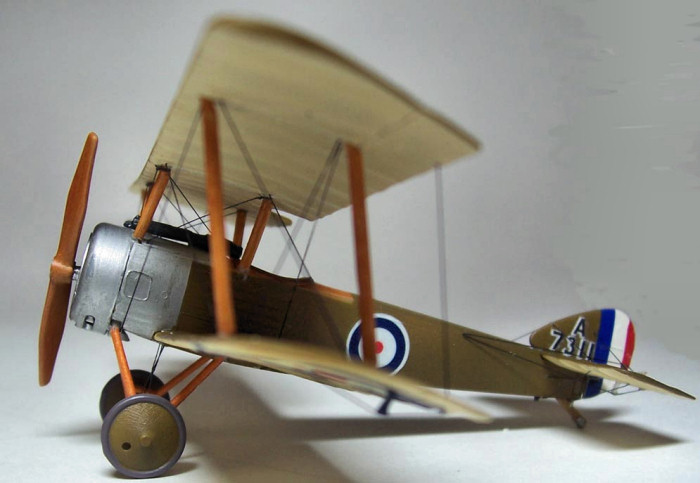
Airfix 1/72 Sopwith Pup
| KIT #: | 01062 |
| PRICE: | $Currently OOP |
| DECALS: | One option |
| REVIEWER: | Kyle Bodily |
| NOTES: | An oldie but a goodie |

| HISTORY |
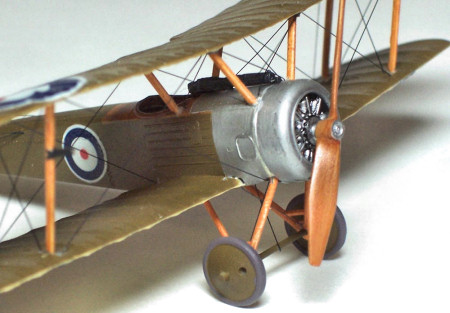 The Sopwith Pup was a favorite among Royal Naval Air Service
pilots. It was superior to the Fokker E.III and performed well against the
superior Halberstadt and Albatros fighters. It was armed with a single machine
gun but because of it, was light it was maneuverable. It could climb and hold
its altitude in a turn better than any other fighter at the time.
The Sopwith Pup was a favorite among Royal Naval Air Service
pilots. It was superior to the Fokker E.III and performed well against the
superior Halberstadt and Albatros fighters. It was armed with a single machine
gun but because of it, was light it was maneuverable. It could climb and hold
its altitude in a turn better than any other fighter at the time.
The Sopwith Pup soldiered on over the Somme and Dunquerque until it was replaced by the Sopwith triplane and Nieuport series of fighters. It continued in service with the RNAS until the end of the war as a ship born fighter.
A total of 1,770 Pups were built. The pup also is noted for two firsts for British aircraft. 1) The Pup was the first British fighter to mount a synchronized gun. 2) The Pup was the first aircraft to land aboard a moving ship and as such it was also the first carrier-based fighter in the world.
| THE KIT |
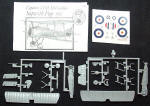 Now
this is what you would call a “blast from the past”. This is an old kit
and I am willing to bet that everyone has either built or at least seen one of
these kits. It is again out of production as I write this but as with most
of these old Jewels, it will keep coming back. This is the kind of kit
that I wish more of from the main stream companies. Sure, it’s got
starving cow wing ribs. Sure, it’s got over done fabric detail.
Sure, it not the most modern kit and it has many flaws. But this is a Father
Son/Daughter moment in a box.
Now
this is what you would call a “blast from the past”. This is an old kit
and I am willing to bet that everyone has either built or at least seen one of
these kits. It is again out of production as I write this but as with most
of these old Jewels, it will keep coming back. This is the kind of kit
that I wish more of from the main stream companies. Sure, it’s got
starving cow wing ribs. Sure, it’s got over done fabric detail.
Sure, it not the most modern kit and it has many flaws. But this is a Father
Son/Daughter moment in a box.
I had just bought several of these
little beauties and sat down with my kids to build them. As we built, my
Son asked me “Did you ever build one of these planes when you were little”.
I told him “yes as a matter 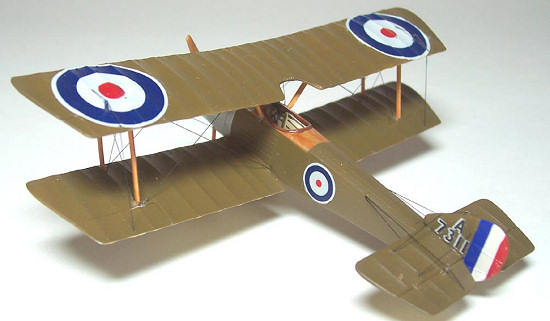 of
fact I’ve built several of them”. This started a long discussion on
everything from “What did Great Grandpa do in WWII” to “What was on the
menu for lunch that day at school”.
of
fact I’ve built several of them”. This started a long discussion on
everything from “What did Great Grandpa do in WWII” to “What was on the
menu for lunch that day at school”.
Old kits like this do more then just represent an aircraft. If you use them to build relationships they are worth more then any box of plastic.
As a box of plastic this kit is very simple. You get 24 crisply parts in all that are used for the model and two that are used to set the wings. I didn’t use these last two parts because the wings worked out for me without them. The fuselage halves have some nice detail molded inside, and it looks good since you can see into the cockpit after the wings are on. As for the fabric and rib detail, well it is a bit over done, OK a lot over done. However I wouldn’t discard the kit for that. The decals look to be in register so I think I will build the aircraft on the box.
| CONSTRUCTION |
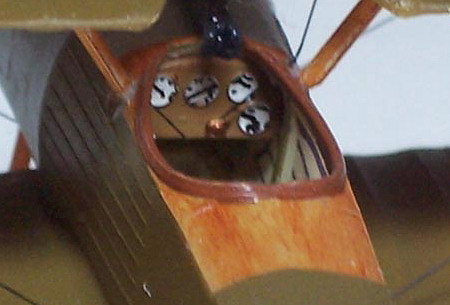 Well I prepped all the parts and got
them ready to build. I like to remove all the parts from the sprue and clean up
the molding seams. The inside was painted Radome tan and the wood framework was
painted good old Model Master’s wood.
Well I prepped all the parts and got
them ready to build. I like to remove all the parts from the sprue and clean up
the molding seams. The inside was painted Radome tan and the wood framework was
painted good old Model Master’s wood.
The only place that I used any filler putty was the joint between the bottom wing and the fuselage. I think that this is one of the better points to these older kits. Most all of them go together quite easily.
This build is an OOB. So there is nothing on it that was not in the box, except of course for the glue, paint and the monofilament for the rigging.
Now one of the cool things about these old kits is the fiddle free way to mount the upper wing. The struts are all connected at the proper angle and every thing just gets glued into the top wing and then as a famous chef might say BAM, ANOTHER NOTCH!!! Now it is true that this system is a little more difficult to cover up the troughs that the strut parts fit into, but it is on the under side of the wing and difficult to see.
| COLORS & MARKINGS |
Now all the parts that were varnished
wood were painted the same way.
Simulating the
wood grain is quite simple really. I just paint the part with a base color
ranging from a very light tan like radome tan to a deep brown, say leather.
This base coat determines the end shade of the wood. After the base paint has
thoroughly dried I use oil paints to simulate the grain. I use all sorts
of browns and tan shades even some yellows and reds. I get a very stiff
bristle brush and tap it in the
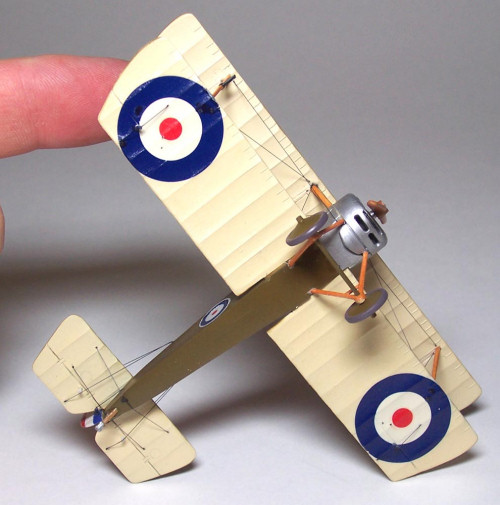 paint and then tap it on the
part. I wait a few minutes and then drag a clean stiff bristle brush over the
part a few times in the direction of the wood grain. Now if it doesn't
work out don’t get all flustered. The oil paint takes several days to dry
thoroughly, so you can just wipe the oil paint off with a clean rag and try
again. After you are happy with the effect don't touch it for a few days and let
the oil paint dry all the way. Then cover the part with a clear finish to
get the sheen you like.
paint and then tap it on the
part. I wait a few minutes and then drag a clean stiff bristle brush over the
part a few times in the direction of the wood grain. Now if it doesn't
work out don’t get all flustered. The oil paint takes several days to dry
thoroughly, so you can just wipe the oil paint off with a clean rag and try
again. After you are happy with the effect don't touch it for a few days and let
the oil paint dry all the way. Then cover the part with a clear finish to
get the sheen you like.
All the upper surfaces were painted in my own mix to simulate PC-10. All the lower surfaces were painted radome tan. Yes I do like Radome tan I find it to be one of the most versatile colors when building WWI models
| CONCLUSIONS |
This build was very simple and a very good kit to use as a first WWI build. Yes it is in 1/72nd scale and may be too little for some. I, myself found it hard to see what I was doing at times.
As Sopwith pups go this is one of the only shows in town and all are out of production at this time. Eduard produced two kits in 1/48th scale. While they were good kits they also suffered from over emphasized wing detail. Aeroclub also built a 1/48th scale kit. It was a vac kit but the wings were very accurate and well done.
The Pup was a very important aircraft. The World War One community needs to have a Pup in production and I hope the model companies will see this and get one or two back into production. Or dare I say it, that someone like say Roden does an all new tool kit. Oh well I can dream can’t I.
| REFERENCES |
“Windsock Datafile Special SOPWITH PUP” Albatros Productions LTD
“Sopwith Pup Aces of World War” Osprey Pub Co., by Norman Franks
“Fighter Aircraft of the 1914-1918 War” Harleyford Publications limited Letchworth, Herts
“Sopwith Fighters in Action” Squadron/Signal Publications, by Peter Cooksley
March 2006
Copyright ModelingMadness.com. All rights reserved. No reproduction in any form without express permission from the editor.
If you would like your product reviewed fairly and fairly quickly, please contact the editor or see other details in the Note to Contributors.